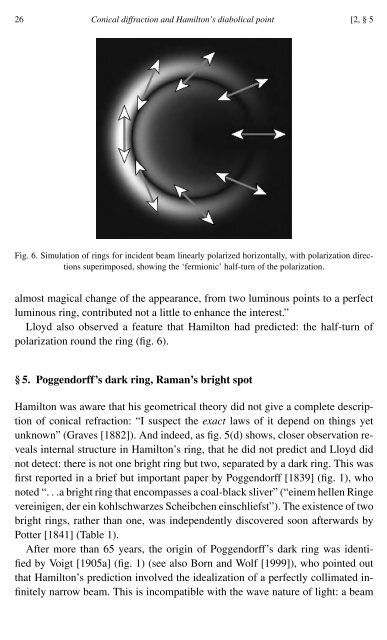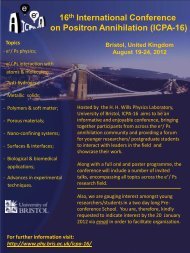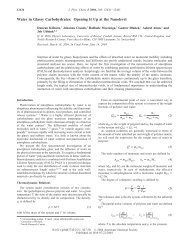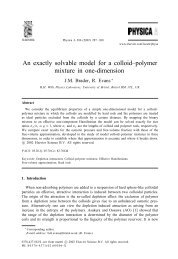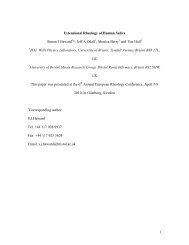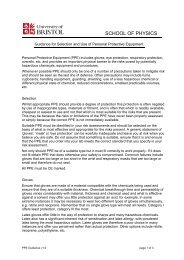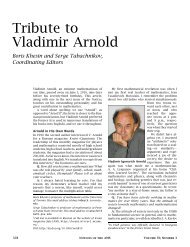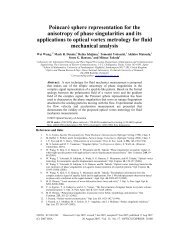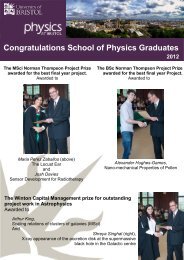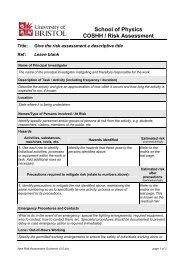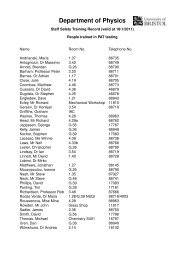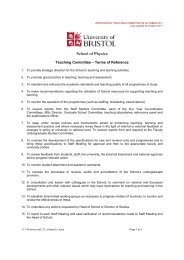Conical diffraction: Hamilton's diabolical point at the ... - Physics home
Conical diffraction: Hamilton's diabolical point at the ... - Physics home
Conical diffraction: Hamilton's diabolical point at the ... - Physics home
Create successful ePaper yourself
Turn your PDF publications into a flip-book with our unique Google optimized e-Paper software.
26 <strong>Conical</strong> <strong>diffraction</strong> and Hamilton’s <strong>diabolical</strong> <strong>point</strong> [2, § 5<br />
Fig. 6. Simul<strong>at</strong>ion of rings for incident beam linearly polarized horizontally, with polariz<strong>at</strong>ion directions<br />
superimposed, showing <strong>the</strong> ‘fermionic’ half-turn of <strong>the</strong> polariz<strong>at</strong>ion.<br />
almost magical change of <strong>the</strong> appearance, from two luminous <strong>point</strong>s to a perfect<br />
luminous ring, contributed not a little to enhance <strong>the</strong> interest.”<br />
Lloyd also observed a fe<strong>at</strong>ure th<strong>at</strong> Hamilton had predicted: <strong>the</strong> half-turn of<br />
polariz<strong>at</strong>ion round <strong>the</strong> ring (fig. 6).<br />
§ 5. Poggendorff’s dark ring, Raman’s bright spot<br />
Hamilton was aware th<strong>at</strong> his geometrical <strong>the</strong>ory did not give a complete description<br />
of conical refraction: “I suspect <strong>the</strong> exact laws of it depend on things yet<br />
unknown” (Graves [1882]). And indeed, as fig. 5(d) shows, closer observ<strong>at</strong>ion reveals<br />
internal structure in Hamilton’s ring, th<strong>at</strong> he did not predict and Lloyd did<br />
not detect: <strong>the</strong>re is not one bright ring but two, separ<strong>at</strong>ed by a dark ring. This was<br />
first reported in a brief but important paper by Poggendorff [1839] (fig. 1), who<br />
noted “...a bright ring th<strong>at</strong> encompasses a coal-black sliver” (“einem hellen Ringe<br />
vereinigen, der ein kohlschwarzes Scheibchen einschliefst”). The existence of two<br />
bright rings, r<strong>at</strong>her than one, was independently discovered soon afterwards by<br />
Potter [1841] (Table 1).<br />
After more than 65 years, <strong>the</strong> origin of Poggendorff’s dark ring was identified<br />
by Voigt [1905a] (fig. 1) (seealsoBorn and Wolf [1999]), who <strong>point</strong>ed out<br />
th<strong>at</strong> Hamilton’s prediction involved <strong>the</strong> idealiz<strong>at</strong>ion of a perfectly collim<strong>at</strong>ed infinitely<br />
narrow beam. This is incomp<strong>at</strong>ible with <strong>the</strong> wave n<strong>at</strong>ure of light: a beam


